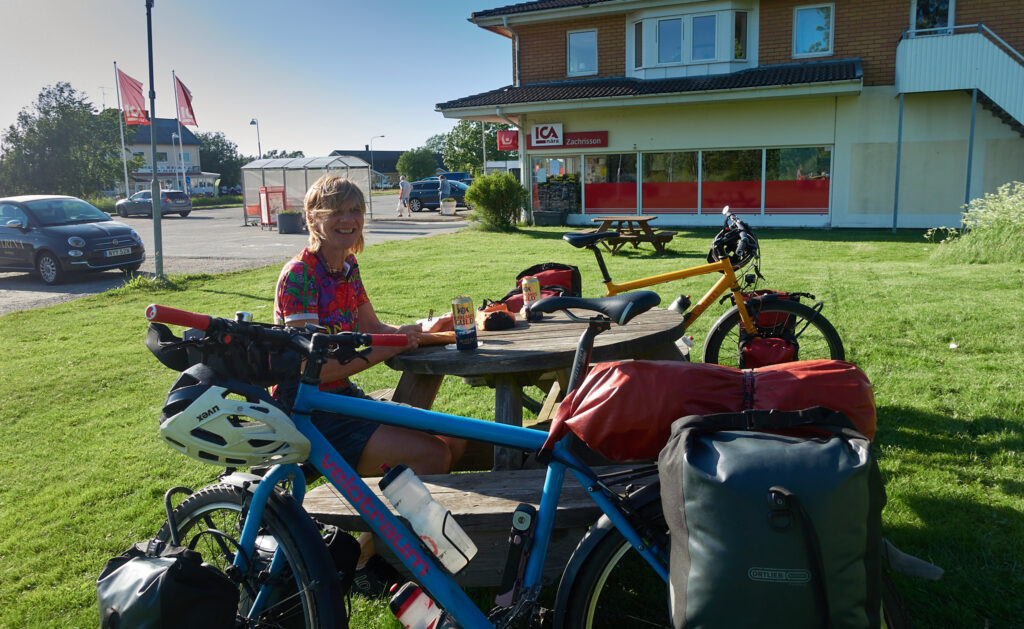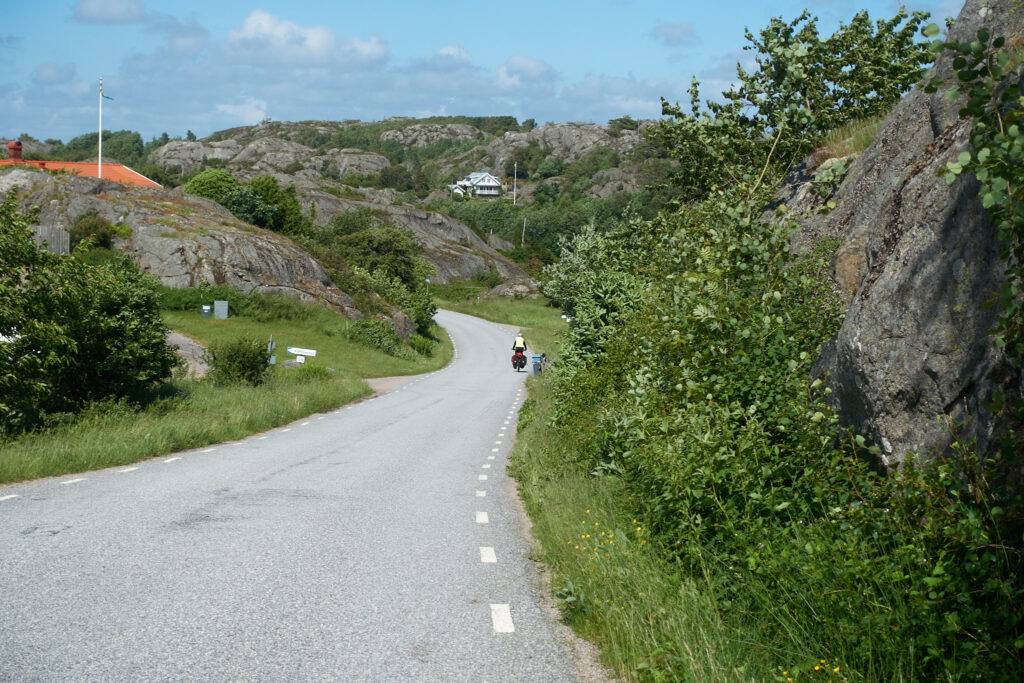We, the fair-weather cyclists, decide to go to far north of Europe. We are taking the plunge and going to discover the Scandinavian peninsula. Perhaps the Northern Lights that we saw in Germany in April were the deciding factor. It is June and midsummer is approaching.
As quickly as possible out of Germany, we take the Flixbus, Marburg – Copenhagen direct. Bicycles in the back.
The timing is spontaneous. We really enjoyed the get-togethers with friends, birthday parties and the start of spring at home. Further invitations are tempting. We decide to follow our wanderlust and postpone the reunion until fall and winter.

Anne and her dog Berta welcome us in Holte, twenty kilometers north of the Danish capital Copenhagen where Anne rents out a small room in her apartment to travellers. She is so wonderfully uncomplicated and open and welcomes us after 10 p.m. – we cannot make it any earlier. Anne enjoys getting to know people. We learn a lot about her family, her guests, Scandinavia and tips for our onward journey. She could easily be our mother. We get offered breakfast the next morning. Sandwiches and water for the road are also included. After all, it is Sunday and if you cycle a lot, you need to drink. And we can come back at any time. On the way to Helsingör, we make a stop at Louisiana, the Museum of Modern Art.




We take the ferry to Helsingör and are already in Sweden.



The Kattegatleden, Sweden’s national cycle route no. 1, takes us up the Swedish Atlantic coast. Camping Laxvik is located on the cycle path, a small, cosy campsite just 100 meters from the sea. We stop, even though we have not bought any food.


In the morning we cycle on to Halmstadt and have brunch on the market square.









The weather is summery. The coast seems familiar. Like Brittany, the Granit Rose, wild, stormy, rocky. The beach, like the Plage de Guillan, only much further north: Kiters, bathers, beach ball on the beach. The storm is so strong that some people decide not to stay by the sea and leave again in their camper. We find a spot sheltered from the wind, as do two other couples of cyclists.
In the morning we have breakfast outside in the sun. The storm has calmed down a bit, the wind has shifted a little so that it is no longer blowing from the front left.




Göteborg – Sweden’s second largest city, gateway for many travelers. Today the parade of freshly graduated high school students takes place. Like carnival. Astrid finds a replacement for the cuddly backpack we use for shopping in the city’s largest outdoor store. Left behind yesterday during a spontaneous picnic on the road. A walk through the beautiful Haga district which looks like a permanent flea market. Rolf buys a postcard for Aunt Erika.





The island hopping of the Bohunäs archipelago begins behind Göteborg. The tip comes from Andrea who cycled here with Martin 34 years ago. She still remembers every place worth seeing and accompanies us from afar. Hey, you two, we are cycling in your footsteps now! The weather changes with storms and heavy rain. Good thing we have a new waterproof cover tent. Camping on Tjörn – the Familjecamping is not exactly what Astrid had in mind for one night. Large, permanent campers, mini golf course, perhaps for a family summer vacation. But the tent meadow with sanitary facilities and bar is great, right on the water. As forecast, it rains heavily during the night. We are so tired that we sleep well until half past eight in the morning. After a hearty breakfast, bike maintenance and a brief chat with other campers, we do not set off today until 12 noon, after the last rain cloud has cleared.




The island hopping today consists of two ferry trips and a boat trip.










Löfgren’s campsite in Lysekil is our destination today. It is like a museum village with little houses, a few caravans, elegant bathrooms, a kitchen, a cozy living room with sofa corners, a dining room for bad weather, books, games and a table tennis table in the middle. And we live right in the middle of it all!




In Lysekil, the last big town before Norway, we spend the Swedish national holiday – June 6 – visiting the large granite church and going on a coastal hike.




In these latitudes, the sun is still setting at this time of year – but it still stays light all night. In any case, you do not need a headlamp here.
